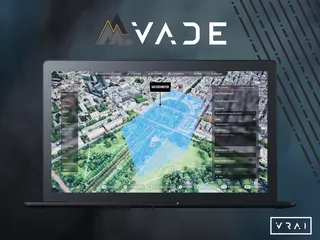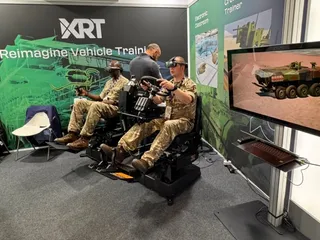WATS 2016: HATS Day 2 Addresses Diverse Helicopter Needs
Contact Our Team
For more information about how Halldale can add value to your marketing and promotional campaigns or to discuss event exhibitor and sponsorship opportunities, contact our team to find out more
The Americas -
holly.foster@halldale.com
Rest of World -
jeremy@halldale.com

Rotary-wing training subject matter experts presented a wide range of concepts – from complex military-style live-virtual-constructive (LVC) multi-player mission scenarios to tools for smaller operators to the challenges of integrating unmanned aircraft into the airspace – on the 2nd day of the Helicopter Aviation Training Symposium (HATS) at the WATS conference in Orlando.
Jim Takats, Senior Vice President, Global Simulation and Training Strategy for TRU Simulation + Training, posed the potential for civil helicopter operators to train in “battlefield-style” simulation exercises which might integrate traditional ground-based simulation (virtual), computer-generated threats (constructive), and real people operating real systems (live). An example scenario might represent an urban disaster management drill involving law enforcement and homeland security, firefighters, EMS and other medical personnel, and so forth. Such as LVC exercise trains decision skills, communication skills, and mission execution skills, Takats explained. “Artificial intelligence and augmented reality are taking away the traditional boundaries. We need to think about it differently.”
John Lambert, former President and Chairman of the Board of the Association for Unmanned Vehicle Systems International (AUVSI) and currently Senior Vice President, Nexutech, outlined the current and ever-changing status of unmanned aircraft regulations in the US. In the past couple of years, the Federal Aviation Adminstration (FAA) has issued more than 3,500 “special exemption” certificates for flying commercial drones, limited to daytime operation and line-of-sight-control. But Lambert predicated there will be “tens and hundreds of millions” of unmanned aircraft seeking “permission to fly” in the coming years. Nine of every 10 unmanned aircraft are rotary-wing driven.
The unmanned industry is anticipating FAA issuance of rules for drones weighing less than 55 pounds, based on a Notice of Proposed Rulemaking (NPRM) issued in February 2015. The regulation is also expected to include training requirements and may include a pilot/operator license mandate.. Currently, training for drones operated by commercial enterprises and hobbyists is not mandated; some organizations offering rudimentary training for about $100 for a one-day course.
Christian Müller of described the dilemma of small operators operating in the Next Generation Flight Training (NGFT)widely varying airspace around Switzerland. With most aircraft in the fleet being single-engine, single-pilot, “no one is flying with the young pilot” on missions. The variety of missions may include aerial work, search-and-rescue, scenic flight, heli-skiing, and air taxi. The only support is radio communications with ground personnel. “How do we safely assume they will make good decisions?” Müller asked.
One approach adopted by Swiss operators is a crew resource management (CRM) type of class in which both pilots and ground personnel participate. The discussion may be in French, German, or Romanish (Switzerland’s three official languages) or the language of aviation, English. However, when discussing lessons learned from accidents and incidents, participants are encouraged to use their “mother tongue,” which places them more at ease in discussing potentially emotional issues.
HeliOffshore Operations Director Francois Lasalle presented the two-year-old group’s approach to collaboration, strategic development, and focus in defining areas of helicopter operations and training which need attention by operators, regulators, aircraft manufacturers, and oil & gas clients. The group established a secure, online information exchange for sharing safety-oriented issues in a non-judgemental environment. Among the topics initially addressed by HeliOffshore are more survivable aircraft design and egress procedures, enhanced breathing systems, line oriented safety audits (LOSA), previously “non existent in the rotary world,” flight path management, and helicopter terrain awareness warning systems (HTAWS).


